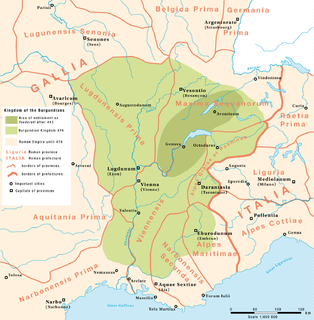
Year 606 (DCVI) was a common year starting on Saturday of the Julian calendar. The denomination 606 for this year has been used since the early medieval period, when the Anno Domini calendar era became the prevalent method in Europe for naming years.

Year 612 (DCXII) was a leap year starting on Saturday of the Julian calendar. The denomination 612 for this year has been used since the early medieval period, when the Anno Domini calendar era became the prevalent method in Europe for naming years.

Pepin I of Landen, also called the Elder or the Old, was the Mayor of the Palace of Austrasia under the Merovingian king Dagobert I from 623 to 629. He was also the mayor for Sigebert III from 639 until his death.
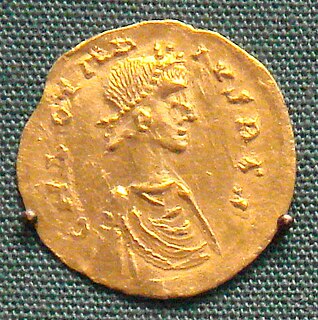
Chlothar II, called the Great or the Young, was King of Neustria and King of the Franks, and the son of Chilperic I and his third wife, Fredegund. He started his reign as an infant under the regency of his mother, who was in an uneasy alliance with Clothar's uncle Guntram, King of Burgundy. Clothar assumed full power over Neustria upon the death of his mother, in 597; though rich this was one of the smallest portions of Francia. He continued his mother's feud with Queen Brunhilda of Austrasia with equal viciousness and bloodshed, finally achieving her execution in an especially brutal manner in 613, after winning the battle that enabled Chlothar to unite Francia under his rule. Like his father, he built up his territories by moving in after the deaths of other kings.

Neustria, or Neustrasia, was the western part of the Kingdom of the Franks.

Chilperic I was the king of Neustria from 561 to his death. He was one of the sons of the Frankish king Clotaire I and Queen Aregund.

Childebert II (c.570–595) was the Merovingian king of Austrasia from 575 until his death in 595, as the eldest son of Sigebert I, and the king of Burgundy from 592 to his death, as the adopted son of his uncle Guntram.
Under the Merovingian dynasty, the mayor of the palace or majordomo was the manager of the household of the Frankish king. The office existed from the sixth century, and during the seventh it evolved into the "power behind the throne" in the northeastern kingdom of Austrasia. In 751, the mayor of the palace, Pepin the Short, orchestrated the deposition of the king, Childeric III, and was crowned in his place.
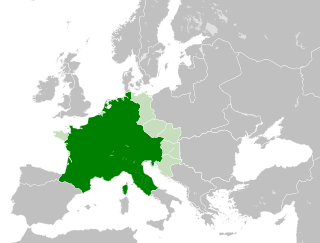
Francia, also called the Kingdom of the Franks, or Frankish Empire was the largest post-Roman barbarian kingdom in Western Europe. It was ruled by the Franks during Late Antiquity and the Early Middle Ages. It is the predecessor of the modern states of France and Germany. After the Treaty of Verdun in 843, West Francia became the predecessor of France, and East Francia became that of Germany. Francia was among the last surviving Germanic kingdoms from the Migration Period era before its partition in 843.

Brunhilda was queen regent of Austrasia, part of Francia, by marriage to the Merovingian king Sigebert I of Austrasia.
Sigebert II (601–613) or Sigisbert II, was the illegitimate son of Theuderic II, from whom he inherited the kingdoms of Burgundy and Austrasia in 613. However, he fell under the influence of his great-grandmother, Brunhilda. Warnachar, mayor of the palace of Austrasia had Sigebert brought before a national assembly, where he was proclaimed king by the nobles over both his father's kingdoms. However, when the kingdom was invaded by Clotaire II of Neustria, Warnachar and Rado, mayor of the palace of Burgundy, betrayed Sigebert and Brunhilda and joined with Clotaire, recognising Clotaire as rightful regent and guardian of Sigebert and ordering the army not to oppose the Neustrians. Brunhilda and Sigebert met Clotaire's army on the Aisne, but the Patrician Aletheus, Duke Rocco, and Duke Sigvald deserted her host and Brunhilda and Sigebert were forced to flee, before being taken by Clotaire's men at Lake Neuchâtel. Brunhilda, little Sigebert and Sigebert's younger brother Corbo were executed by Clotaire's orders, and Austrasia and Neustria were reunited under Clotaire's rule, who now ruled the entire kingdom of the Franks.

Theudebert II (c.585-612), King of Austrasia, was the son and heir of Childebert II. He received the kingdom of Austrasia plus the cities (civitates) of Poitiers, Tours, Le Puy-en-Velay, Bordeaux, and Châteaudun, as well as the Champagne, the Auvergne, and Transjurane Alemannia.
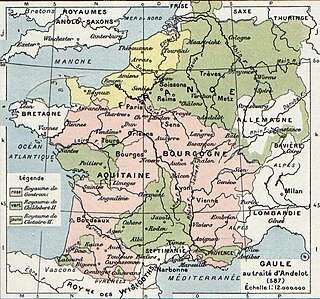
Theuderic II (587–613), king of Burgundy (595–613) and Austrasia (612–613), was the second son of Childebert II. At his father's death in 595, he received Guntram's kingdom of Burgundy, with its capital at Orléans, while his elder brother, Theudebert II, received their father's kingdom of Austrasia, with its capital at Metz. He also received the lordship of the cities (civitates) of Toulouse, Agen, Nantes, Angers, Saintes, Angoulême, Périgueux, Blois, Chartres, and Le Mans. During his minority, and later, he reigned under the guidance of his grandmother Brunhilda, evicted from Austrasia by his brother Theudebert II.

Gundemar was a Visigothic King of Hispania, Septimania and Galicia (610–612).
Godinus succeeded his father Warnachar as mayor of the palace of Burgundy in 626 and held that post until 627. He married his stepmother Bertha and the king, Clotaire II, hunted him down for this. He fled to the court of Dagobert I, the king's son, in Austrasia, but Clotaire found him in Chartres and executed him.
Berthoald was the mayor of the palace of Burgundy from some time before 603 until his death in the next year. According to the Burgundian chronicler Fredegar, he was moderate, sensible, brave, and honest.
Protadius was the mayor of the palace of Burgundy from 604, when he displaced his rival Berthoald, until his death two years later. He was originally the noble lover of Brunhilda, the grandmother of and regent for King Theuderic II. She, however, desired to raise him to status in the kingdom and had him given the patricianship over the lands east of the Jura, whose duke, Wandalmar, had died in 604. She then conspired to do away with Berthoald, mayor of the palace, by sending him with only 300 men to the region of the Seine. Attacked by Clotaire II of Neustria's son, Merovech, and his mayor, Landric, Berthoald died in the ensuing battle when he realised that he had nothing to lose, for he was no longer safe at court.
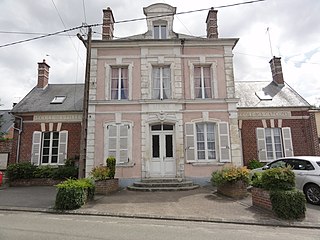
Quierzy is a commune in the Aisne department in Hauts-de-France in northern France, straddling the Oise River between Noyon and Chauny.
Rado, a brother of Audoin/Ouen and son of Saint Authaire (Audecharius), was the mayor of the palace of Burgundy from 613 to 617.

